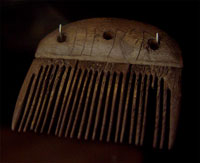A Good Reason To Grow Food
When the average person runs out of resources they have to beg borrow or steal to survive.
The simple solution to the failure of fiscal policy that has a global responsibility is to work outside of
its reach and provide an overabundance of resources.
Local food production will secure a community and provide clarity of mind through exercise and
proper nutrition. Good health and interaction with the environment will enable innovation and insight
towards freedom from corrupt politics. Fresh food grown for the sake of environmental quality will
quickly outpace demand and enable storage, savings and stability that provides for lean times.
Balanced ecological systems will grow wild and be increasingly diverse, full of life.
If you are disinterested in agrarian lifestyle, technical innovation and engineering are also necessary
to promulgate overabundance. The main point is to be constructive and thinking beyond weaponry
and toxicity. Farming tools are always improving, no-till tools need refinement, invent something!
If you prefer to sit on your ass and shuffle information you will become clumsy, unhealthy,
and a beg borrow or stealer of other peoples health and ability.
The loss of fiscal power translates to loss of monetary value. Inflation will ruin markets. FUCK IT!
Grow wild and be a natural human.!!
OVERABUNDANCE is much easier than being lied to by desperate greed freakazoids.!
VISIT YOUR CROPS! SUPPORT LOCAL ORGANIC FARMS!
L
When the average person runs out of resources they have to beg borrow or steal to survive.
The simple solution to the failure of fiscal policy that has a global responsibility is to work outside of
its reach and provide an overabundance of resources.
Local food production will secure a community and provide clarity of mind through exercise and
proper nutrition. Good health and interaction with the environment will enable innovation and insight
towards freedom from corrupt politics. Fresh food grown for the sake of environmental quality will
quickly outpace demand and enable storage, savings and stability that provides for lean times.
Balanced ecological systems will grow wild and be increasingly diverse, full of life.
If you are disinterested in agrarian lifestyle, technical innovation and engineering are also necessary
to promulgate overabundance. The main point is to be constructive and thinking beyond weaponry
and toxicity. Farming tools are always improving, no-till tools need refinement, invent something!
If you prefer to sit on your ass and shuffle information you will become clumsy, unhealthy,
and a beg borrow or stealer of other peoples health and ability.
The loss of fiscal power translates to loss of monetary value. Inflation will ruin markets. FUCK IT!
Grow wild and be a natural human.!!
OVERABUNDANCE is much easier than being lied to by desperate greed freakazoids.!
VISIT YOUR CROPS! SUPPORT LOCAL ORGANIC FARMS!
L

